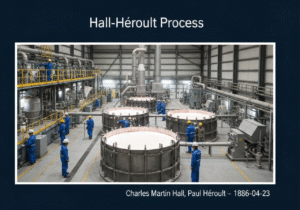To shorten the time it takes to deliver a product or service to a customer.
- Metodologías: Ergonomía
Lead Time Reduction

Lead Time Reduction
- Metodología ágil, Mejora continua, Experiencia del cliente, Justo a tiempo (JIT), Manufactura esbelta, Mejora de procesos, Desarrollo de productos, Cadena de suministro, Mapeo del flujo de valor
Objetivo:
Cómo se utiliza:
- The process of reducing the time it takes from the start of a process to its conclusion. In manufacturing, it is the time from when an order is received to when the product is delivered. In product development, it is the time from when an idea is conceived to when it is launched.
Ventajas
- Improves customer satisfaction; Increases flexibility and responsiveness.
Contras
- Can be difficult to achieve without a systematic approach; May require significant changes to processes and systems.
Categorías:
- Lean Sigma, Fabricación
Ideal para:
- Reducing the time it takes to deliver a product or service to a customer to improve customer satisfaction and increase flexibility.
Lead Time Reduction is widely implemented in sectors such as automotive, aerospace, electronics, and consumer goods, where competition necessitates rapid product delivery. This methodology is particularly effective during the design and development phases of a project, where cross-functional teams, including designers, engineers, and supply chain professionals, collaborate to identify bottlenecks and inefficiencies in the workflow. Initiated by project managers or product owners, teams utilize techniques like concurrent engineering, agile methodologies, and value stream mapping to enhance collaboration and communication. One application of this strategy can be seen in the automotive industry, where companies like Toyota have famously adopted lean manufacturing principles to minimize waste and expedite production. The integration of digital tools such as computer-aided design (CANALLA) and project management software also plays a significant role in reducing lead times, allowing for rapid prototyping and iteration. Industries employing these practices often report improved delivery times and increased customer loyalty as a result of more responsive supply chains, which can adjust to demand fluctuations or design changes with agility. Regular training and workshops on lead time reduction principles ensure that teams remain adaptable and capable of implementing innovative solutions throughout the product lifecycle.
Pasos clave de esta metodología
- Identify bottlenecks and delays within the current process.
- Prioritize areas for improvement based on impact and feasibility.
- Implement lean principles to eliminate waste and streamline workflows.
- Adopt iterative development practices to shorten cycles and enhance adaptability.
- Utilize cross-functional collaboration to enhance communication and speed up decision-making.
- Integrate advanced technologies for automation and real-time tracking of progress.
- Encourage a culture of continuous improvement and feedback loops among teams.
- Measure performance improvement and adjust processes accordingly for further efficiency.
Consejos profesionales
- Implement cross-functional teams to enhance communication and expedite decision-making processes.
- Utilize rapid prototyping techniques to gather user feedback early and iterate designs quickly.
- Adopt Agile methodologies for continuous improvement and flexibility in product development cycles.
Leer y comparar varias metodologías, recomendamos el
> Amplio repositorio de metodologías <
junto con otras más de 400 metodologías.
Sus comentarios sobre esta metodología o información adicional son bienvenidos en la dirección sección de comentarios ↓ , así como cualquier idea o enlace relacionado con la ingeniería.
Contexto histórico
1890
1924
1930
1940
1950
1950
1958
1886-04-23
1897
1930
1940
1949
1950
1950
1960
(si se desconoce la fecha o no es relevante, por ejemplo "mecánica de fluidos", se ofrece una estimación redondeada de su notable aparición)















Publicaciones relacionadas
Gestión de operaciones de fabricación (MOM)
Sistema de Ejecución de Fabricación (MES)
Plan de control de la fabricación
Pruebas manuales
Tablas de evaluación de la manipulación manual (MAC)
ManTRA (Herramienta de evaluación de riesgos en las tareas manuales)